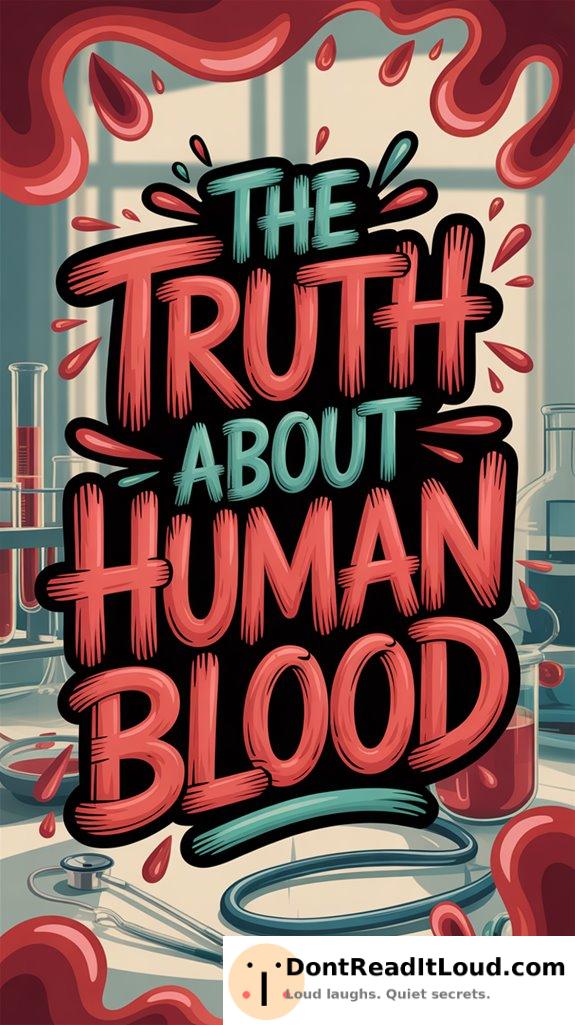
Human blood is essential, functioning as a dynamic transport system carrying oxygen, nutrients, and waste materials. It consists of plasma and cells, including red and white blood cells and platelets. Each person’s blood type is unique, making accurate blood typing critical for safe transfusions. Myths about blood, such as feeling tired for days after donating, are generally untrue. Blood holds importance in medicine and culture, representing life, rituals, and dramatic moments. Curious about other ways blood influences our lives?
Composition and Components of Blood
Understanding the composition and components of blood is essential because it plays a critical role in maintaining life.
Envision blood as a party in your veins, where blood plasma is the DJ, spinning the hits and keeping things moving. Blood cells are the partygoers—red blood cells deliver oxygen, white blood cells defend against germs, and platelets jump in to stop bleeding.
Plasma, the liquid part, acts like the Uber driver, carrying nutrients, hormones, and waste. So, next time you think of blood, picture it as a lively gathering working together to keep you alive!
The Essential Functions of Blood
While you mightn’t think about it daily, blood performs essential functions that keep you alive and well. Picture your blood as a busy highway, constantly on the move. It transports oxygen, nutrients, and positive energy throughout your body, while efficiently collecting and removing waste.
Your unique blood type—A, B, AB, or O—makes your body’s blood supply one-of-a-kind.
The next time you consider donating blood, remember you’re sharing a vital part of yourself with someone who truly needs it. Donating blood is more than an act of kindness; it’s your chance to be a real-life hero, quietly saving lives.
Debunking Common Myths About Blood
Consider this: while blood plays vital roles, misconceptions about it can cause confusion. For example, some believe donating blood makes you tired all the time. Don’t worry—your body quickly replaces what you donate, so you’ll feel back to normal soon.
Another common myth is that all blood types are the same. In reality, blood typing ensures safe matches for transfusions. So when someone boasts about their O-negative blood being “universal,” they’re partly right, but there’s more to it.
Blood’s Role in Medicine and Culture
Though often overlooked, blood’s significance in medicine and culture is profound. You have to admit, blood brings its own flair for drama. Whether saving lives in surgery or making an appearance in vampire films, it always commands attention.
In medicine, it’s the versatile MVP—used for transfusions, diagnostic tests, and sometimes creating an unexpected mess.
Culturally, blood carries powerful symbolism, from blood oaths to the squeamish reactions during horror movies. Blood rituals have existed since humans first intertwined spiritual meaning with bodily fluids.
Conclusion
You’ve now learned the fascinating facts about human blood. You understand its complex components and the vital roles they play in keeping you healthy. You can confidently challenge common myths and recognize what blood truly does. Its importance in medicine is clear, and you see how it holds cultural meaning throughout history. With this knowledge, you can truly appreciate the remarkable substance flowing through your veins and its impact on health and life.



